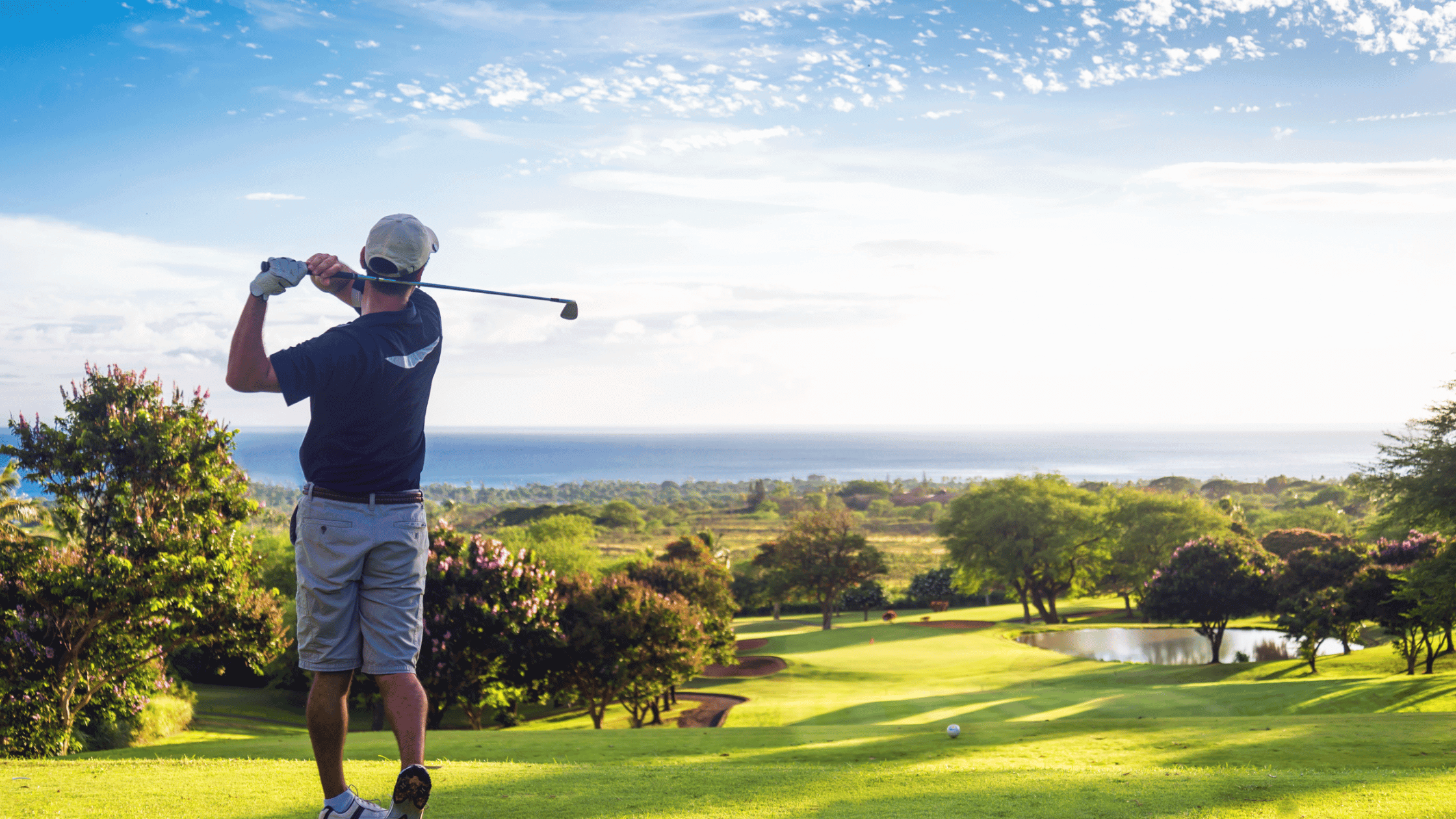Back Pain in Golfers: Causes, Impact, and Mitigation Strategies

Licensed Physical Therapist, PT, DPT // Certified Dry Needling Specialist // TPI Level 1 Certified // BaseU Hitting and Pitching Certified // EW Motion Therapy Homewood
Golf, often perceived as a low-impact sport, surprisingly leads many enthusiasts to confront an unwelcome opponent: back pain. This ailment affects not only the game’s quality but also impinges on daily life. While pain at its worst can keep you off the course, there are strategies to help reduce the source of your pain and help improve your performance. One is physical therapy - we love helping our golfers at EW Motion Therapy reduce pain and stay on the course. Even if you decide that our physical therapy doesn’t fit your needs, you can still read on as we delve into the causes of back pain in golfers, its impact on their game, practical tips for pain mitigation, and the crucial role physical therapy can play in recovery and prevention.
Common causes of back pain in golfers
- Herniated or bulging discs: The spine is cushioned by discs that can herniate or bulge, often due to repetitive twisting and bending motions in golf. This can cause nerve irritation and severe back pain, impacting a golfer's ability to swing effectively.
- Spinal stenosis: This condition involves narrowing the spinal canal, which can pressure the nerves. Golfers with spinal stenosis may experience pain, numbness, or weakness, particularly when bending backward during a swing.
- Musculoskeletal disorders: Musculoskeletal issues are prevalent among golfers and can contribute significantly to back pain.
- Muscle strains and ligament sprains: Repeated golf swings can lead to muscle strains or ligament sprains due to overuse or improper technique, leading to inflammation and discomfort.
- Arthritis and osteoporosis: Conditions like arthritis and osteoporosis, common in older golfers, can exacerbate back pain. These conditions weaken bones and joints, making them more susceptible to stress and injury.
Other medical conditions
There are other health concerns that, while not directly related to golf, can impact a golfer's back health.
- Kidney stones or infections: Problems such as kidney stones or infections can cause severe back pain, often mistaken for musculoskeletal issues. Golfers experiencing such symptoms should seek medical evaluation.
- Fibromyalgia: This chronic condition, characterized by widespread musculoskeletal pain, can also contribute to back discomfort in golfers.
Given the variety of potential medical conditions that can cause back pain, golfers must seek a professional assessment. A correct diagnosis is essential for effective treatment and prevention strategies. Understanding the specific medical condition causing back pain enables golfers and their healthcare providers to develop targeted, effective treatment plans. This approach alleviates pain and minimizes the risk of further injury, ensuring a quicker and safer return to the game.
How back pain influences your golf game
Golf demands a unique blend of physical attributes - flexibility, strength, and endurance. The repetitive nature of the golf swing is a fundamental cause of back pain. This motion involves a complex series of movements: twisting, bending, and the sudden acceleration of the club, all of which put considerable stress on the spine and surrounding muscles.
Improper technique can also exacerbate the risk of injury. An incorrect stance or swing can lead to uneven stress distribution across the back, increasing the likelihood of muscle strains, ligament sprains, or more severe conditions like herniated discs.
Alterations in performance and technique
Back pain doesn't just cause discomfort; it can fundamentally alter a golfer's game. Pain can lead to compensatory adjustments in swing technique, often decreasing swing speed and accuracy. It not only impacts performance but also increases the risk of further injury.
Beyond physical limitations, back pain can have psychological repercussions. It can lead to decreased concentration, frustration, and a lack of confidence on the course, further hindering performance.
Tips to reduce back discomfort
Warm-ups and stretching
A comprehensive warm-up routine focusing on flexibility and muscle activation is an effective way to prevent back pain. Stretching exercises, especially those targeting the back, hips, and shoulders, can significantly reduce the risk of injury.
Strength and core stability exercises
Building core strength is vital for golfers. Exercises that enhance core stability can improve swing mechanics and reduce the strain on the back. Practices such as yoga and Pilates can be particularly beneficial in building this functional strength.
Physical therapy for back pain in golfers
Physical therapy offers a multifaceted approach to treating back pain in golfers. By tailoring treatment plans to individual needs, physical therapists can effectively address back pain symptoms and underlying causes. Let's explore what a comprehensive treatment plan might entail.
Initial assessment and customized treatment plans
Comprehensive evaluation
A physical therapist begins with a thorough assessment, including medical history, physical examination, and possibly functional movement analysis. This evaluation helps identify specific pain triggers and biomechanical issues in the golfer's swing.
Development of a personalized plan
Based on the assessment, the therapist designs a customized treatment plan. This plan aims to alleviate pain, restore function, and prevent recurrence. It typically combines various therapeutic techniques and exercises, adjusted over time as the golfer progresses.
Core components of physical therapy for back pain
Pain management techniques
Early sessions often focus on pain relief using methods like heat or cold therapy, electrical stimulation, or ultrasound. These techniques reduce inflammation and muscle spasms, providing immediate relief.
Strengthening and flexibility exercises
A core part of the treatment plan involves exercises to strengthen the back, abdomen, and pelvic muscles, enhancing core stability. Flexibility exercises are also crucial, especially for the back, hips, and shoulders. These exercises improve range of motion and reduce the strain on the back during golf swings.
Manual therapy
Manual therapy, including massage and spinal manipulation, can be effective for specific conditions. These techniques help loosen tight muscles, improve circulation, and enhance joint mobility.
Postural training and ergonomic advice
Therapists often educate golfers on proper posture in daily life and while playing golf. This education may include ergonomic assessments and recommendations to reduce strain on the back.
Advanced therapeutic interventions
Advanced exercise programs
As recovery progresses, the therapist introduces more advanced exercises. These may include dynamic stability exercises, proprioceptive training, and sport-specific drills to return to golf safely.
Functional movement training
This involves training the golfer in movements that mimic the golf swing. The goal is to improve the biomechanics of the swing, reducing stress on the back.
Monitoring progress and ongoing support
Regular assessments
The therapist regularly evaluates the golfer's progress, adjusting the treatment plan as necessary. This ensures the therapy remains effective and aligned with the golfer's evolving needs.
Long-term strategies and preventive advice
Physical therapy extends beyond immediate pain relief. Therapists guide long-term strategies to prevent back pain, including exercise routines, lifestyle modifications, and warm-up techniques before golfing.
While back pain can be a common issue for golfers, it is not insurmountable. Understanding the causes and impact of back pain is the first step. Implementing preventive measures such as proper warm-up routines, incorporating strength and flexibility exercises, and seeking the expertise of physical therapists can make a significant difference. With the right approach, golfers can alleviate their back pain and enhance their performance, ensuring that they continue to enjoy the game pain-free.
By adhering to a well-structured physical therapy program, golfers can overcome back pain, enhance their performance, and enjoy a healthier, more active lifestyle on and off the golf course. Remember, the goal isn't just to play without pain but to optimize overall health and well-being. As a golfer, taking proactive steps towards managing back pain improves your game and contributes to a healthier, more active lifestyle. Your physical therapist can be an excellent ally in getting you back on the course pain-free - we consider it a privilege to do this every day for our golfers at EW Motion Therapy. If you’re curious about how else physical therapy can help your golf game, click the button below to download our answers to 20 frequently asked questions.


